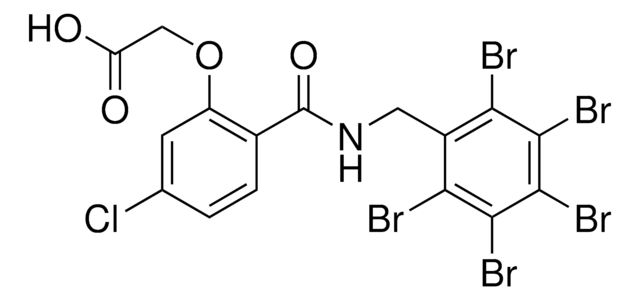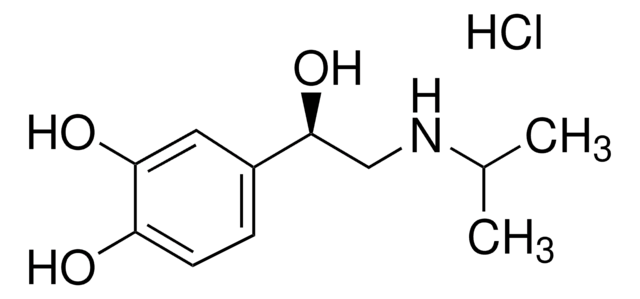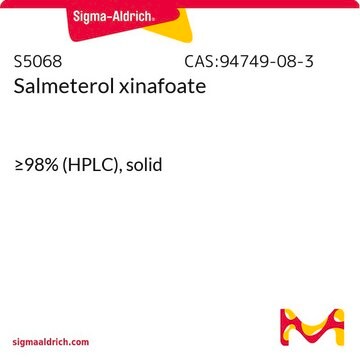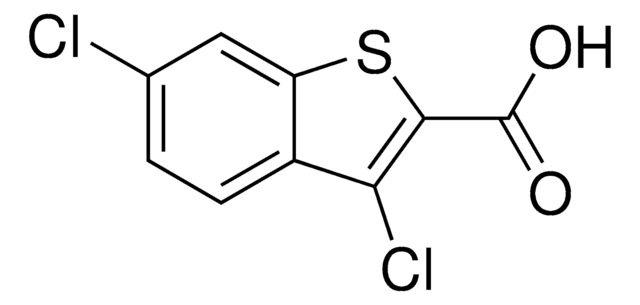C231
CGP-20712A methanesulfonate salt
solid, ≥98% (HPLC)
Synonym(e):
(±)-2-Hydroxy-5-[2-[[2-hydroxy-3-[4-[1-methyl-4-(trifluoromethyl)-1H-imidazol-2-yl]phenoxy]propyl] amino]ethoxy]-benzamide methanesulfonate salt
About This Item
Empfohlene Produkte
Assay
≥98% (HPLC)
Form
solid
Lagerbedingungen
desiccated
Farbe
white to off-white
Löslichkeit
H2O: >10 mg/mL
DMSO: 100 mg/mL
Lagertemp.
2-8°C
SMILES String
CS(O)(=O)=O.Cn1cc(nc1-c2ccc(OCC(O)CNCCOc3ccc(O)c(c3)C(N)=O)cc2)C(F)(F)F
InChI
1S/C23H25F3N4O5.CH4O3S/c1-30-12-20(23(24,25)26)29-22(30)14-2-4-16(5-3-14)35-13-15(31)11-28-8-9-34-17-6-7-19(32)18(10-17)21(27)33;1-5(2,3)4/h2-7,10,12,15,28,31-32H,8-9,11,13H2,1H3,(H2,27,33);1H3,(H,2,3,4)
InChIKey
VFPOVCXWKBYDNF-UHFFFAOYSA-N
Angaben zum Gen
human ... ADRB1(153)
Anwendung
Biochem./physiol. Wirkung
Vorsicht
Rechtliche Hinweise
Lagerklassenschlüssel
11 - Combustible Solids
WGK
WGK 3
Flammpunkt (°F)
Not applicable
Flammpunkt (°C)
Not applicable
Persönliche Schutzausrüstung
Eyeshields, Gloves, type N95 (US)
Analysenzertifikate (COA)
Suchen Sie nach Analysenzertifikate (COA), indem Sie die Lot-/Chargennummer des Produkts eingeben. Lot- und Chargennummern sind auf dem Produktetikett hinter den Wörtern ‘Lot’ oder ‘Batch’ (Lot oder Charge) zu finden.
Besitzen Sie dieses Produkt bereits?
In der Dokumentenbibliothek finden Sie die Dokumentation zu den Produkten, die Sie kürzlich erworben haben.
Unser Team von Wissenschaftlern verfügt über Erfahrung in allen Forschungsbereichen einschließlich Life Science, Materialwissenschaften, chemischer Synthese, Chromatographie, Analytik und vielen mehr..
Setzen Sie sich mit dem technischen Dienst in Verbindung.







